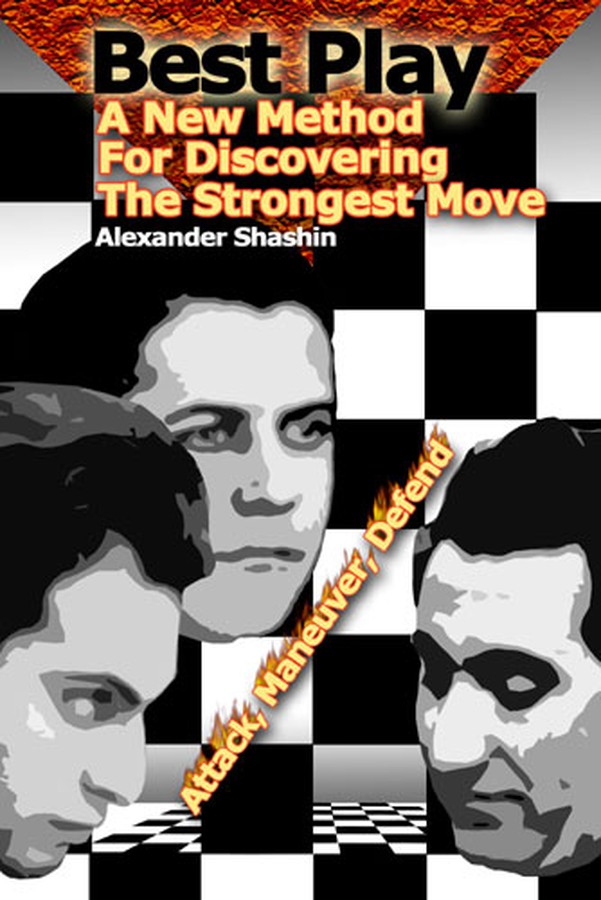| Nivå | C-D |
| Utgivelsesdato | Juli 2013 |
| Forfatter | |
| Pris | 285 NOK |
Best Play, A New Method For Discovering The Strongest Move
Attack, Maneuver, DefendI våre dager utkommer de fleste "hemmeligheter" i bokform på engelsk. Her en høyst spennende og original bok av den russiske treneren Shashin som lovprises i et forord av Morozevich om den store betydningen han hadde for verdensstjernen for å komme ut av en formkrise i 2002.
FORFATTERENS innledning til boka forteller mye:
Dear reader, in your hands you are holding a somewhat unusual chess manual. Let me be more accurate: this manual is completely unusual. How, or why? Because, by studying it, you will learn an original protocol for identifying the strongest chess move in any position, one which has nothing in common with traditional techniques. I have called this method “universal,” and I have no doubt but that it will help us to find the strongest move in all possible chess positions, without exception – be they positions with all 32 pieces on the board or positions featuring the barest minimum of pieces.
This book is split into two parts; the first is the elements. The most important section of the first part of this book is Chapter 6, where we find all the most important components of the universal method for searching for the strongest move. The second part of this book develops naturally from the first. There, you will find examples of varying degrees of complexity. In my view, the first two chapters in Part II will be within the limits of the powers of a strong Russian second-category player (in U.S. terms, a Class B player). Chapters 3, 4, and 5 are more complex, but in the end, “if there’s no pain, there’s no gain!” You can do it! You will get through these chapters also.
The first 125 examples were annotated with the help of chess engines. These were various permutations of Fritz (particularly Fritz 11) and the program Rybka 3 (32-bit). My hope is that this will keep the number of gross analytical blunders to a minimum.
For readers who lack access to a computer: Rest assured, in the larger scheme of things, we don’t need a computer! I repeat: It’s not necessary! Why?
The reason is simple. Mine is a method for searching for the best move by a human, not by any of our silicon friends. Let me add to that: the universal method for identifying the best chess move is, to all intents and purposes, a three-part method derived from the ideas of three extremely gifted players, all of whom lived in the pre-computer era. They were Mikhail Tal, Jose Raul Capablanca, and Tigran Petrosian. This method is the first of its kind. The very best move is a child of the method. Tal, Capablanca, and Petrosian are our teachers. Fritz and any flavor of Rybka are merely our assistants.
I cannot conclude this introduction without saying, “Thank you.” I am grateful to many people (both chessplayers and non-chessplayers) for their help.
Three especially: Alexander Kentler, Leonid Yudasin, and Vladimir Bazhenov. The first – for the chance to publish, in the magazine Shakhmatny Peterburg, a series of articles concerning this method. For the second – we are speaking of international grandmaster Leonid Yudasin, author of the fundamental investigation The Thousand-Year Myth of Chess – for the opportunity to put in his book an article on the problems of the foundations of the game of chess that was very important to me.
I want to single out Vladimir Bazhenov for special mention. Most of all, for engaging me in a deep discussion over the number of parameters in a chess position. The result was that I had to increase the number of parameters from four to five. Really, the game of chess is practically inexhaustible. Chess is limitless... A.Shashin, St. Petersburg, January 2013
| Innbundet? | Nei |
| Type | Bok |
| Språk | Engelsk |
| Antall sider | 401 |

